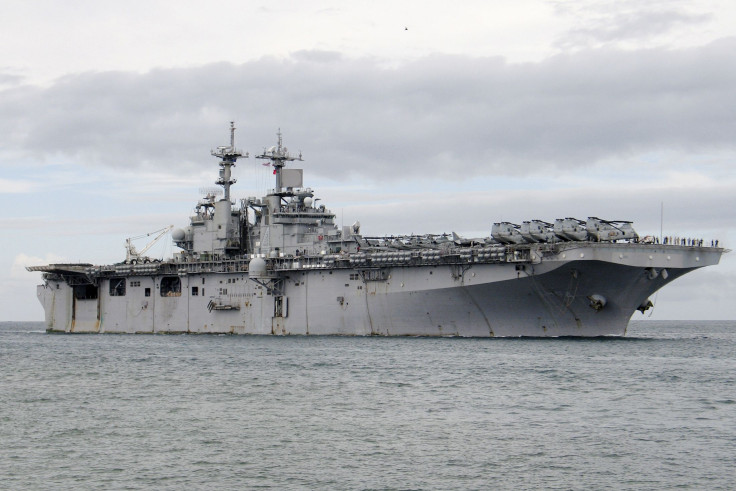US Downed A Second Iranian Drone Last Week, USS Boxer Buzzed By Chopper, Speedboats

The U.S. Navy reportedly brought down a second Iranian drone last week in the Strait of Hormuz, and may have engaged more of them. Reports quoting defense officials also say the USS Boxer, which brought down the drones, was buzzed by at least one Iranian helicopter and speedboats that moved toward the American warship as it transited the strategic strait.
In response, the Boxer sent a up a helicopter to ward off the Iranian helicopter, the NPR quoted defense officials saying. Last week President Trump had announced the downing of an Iranian drone but did not mention about the second one.
Gen. Kenneth McKenzie, the commander of the U.S. Central Command, told CBS News that the warship engaged the drones about an hour apart during the nine-hour transit. The ship carries a complement of helicopters and was carrying out flying operations during the transit.
Trump said the USS Boxer took defensive action after giving multiple calls to the Iranians to stand down. He described this confrontation as the latest of many provocative and hostile actions by Iran against vessels operating in international waters. “The United States reserves the right to defend our personnel, our facilities and interets and calls upon all nations to condemn Iran’s attempts to disrupt freedom of navigation and global commerce,” he said.
The Pentagon confirmed that the USS Boxer had used electronic measures to take down a drone that was operated by Iran’s military. Officials said the warship, as it moved between the Persian Gulf and the Gulf of Oman, used a new anti-drone system. This system called the Marine Corps’ Light Marine Air Defense Integrated System (LMADIS), a defense official said, took down the drone that flew within 1,000 yards of the Navy warship.
The California-based 11 th Marine Expeditionary Unit has been deployed to the Middle East with the new anti-drone system. “That unit, which includes about 2,200 Marines, is currently on a six-month sea deployment with the Navy’s Boxer Amphibious Ready Group,” the official said. Experts say the new anti-drone system uses a radar and cameras to scour the sky to identify drones and analyze between friendly and hostile systems. After spotting the threat, the LMADIS uses radio frequencies to jam the drone.
Ian Thornton-Trump, security head at AMTrust Europe, told Forbes that jamming, spoofing and old fashioned shooting are all part of the array of capabilities modern warfare encompasses. “What Iran needs to understand is, western actions will include cyber electronic warfare and a range of kinetic capabilities,” he explained.Thornton-Trump said the U.S. has vast capabilities that allow it to gather intelligence through the interception of signals and communications. He said the Iranian drone’s telemetry, electronic characteristics and the manner in which it was used and deployed, will assist U.S. defense forces in refining countermeasures and enhancing targeting capabilities.
© Copyright IBTimes 2025. All rights reserved.





















